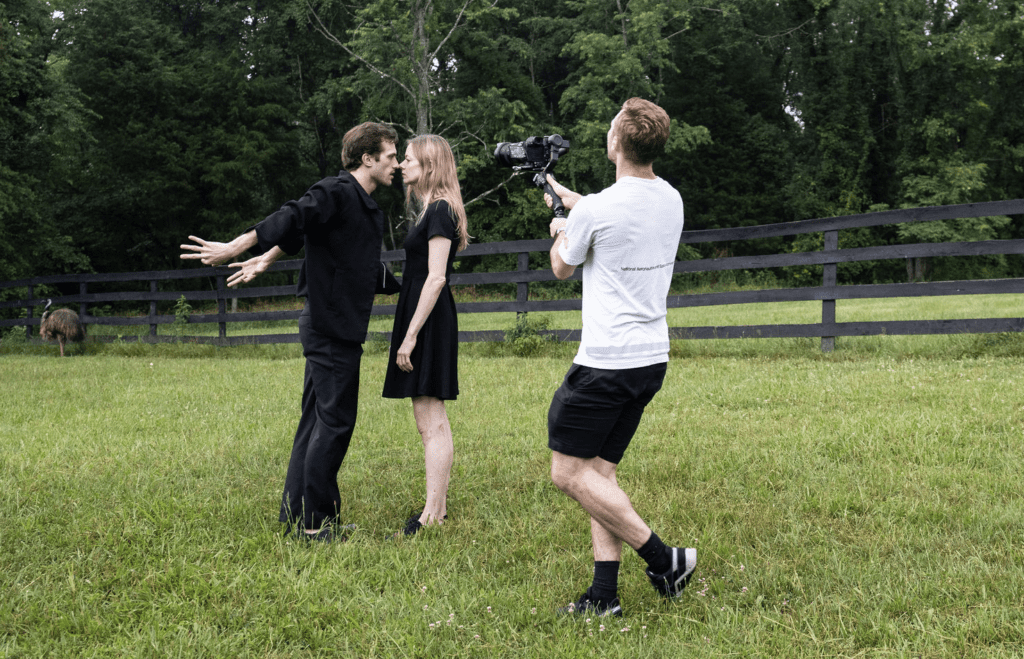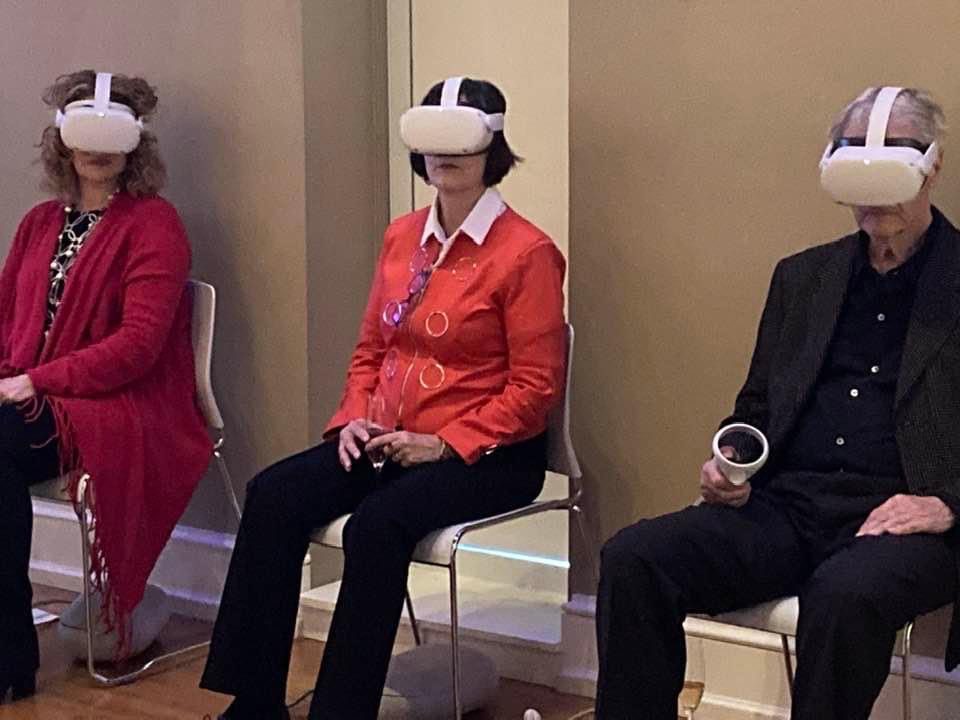Chamber Dance Project Dives Deeper into Dance on Film
By • March 2, 2023 0 2095

When the pandemic shut down live performance in 2020, choreographer Diane Coburn Bruning, founder and artistic director of Chamber Dance Project, whipped up a virtual season for her D.C.-based contemporary ballet company. Audience members went online to interact with the dancers, who were sent GoPro cameras and monitors, and to watch live rehearsals. “It created an online community,” notes Bruning proudly.
Sessions on ballet history were added, with participants viewing performance videos on their own, then joining live discussions via Zoom. These morphed into a Great Works Series that began meeting in person in the “media lounge” at the company’s offices on 12th Street NW when conditions allowed.
Upcoming Great Works events will take place this spring on March 8 and April 12, both Wednesdays, from 6:30 to 8 p.m. Tickets, available at chamberdance.org, are $25.
The subject of the March 8 session will be the work of leading American choreographer William Forsythe, who has spent most of his career in Germany. Attendees will watch 10-minute excerpts of pieces by Forsythe and by one of his main influences, New York City Ballet’s George Balanchine. The post-screening discussion will explore the question, “Where did Forsythe push it?” in Bruning’s words, “where did he take neoclassicism?”
“I let the audience react and discuss,” says Bruning, who fills in the historical context after viewers share their first impressions. Newcomers, including dance novices, are welcome to join the “inner circle” of about 20; participants are asked to introduce themselves with a movement. “It’s kind of a course over time, gently led by me,” she explains. “Plus we have chocolate and wine.”
The April 12 session will be devoted to “See Me,” filmed at a farm in Manassas, Virginia, by Chamber Dance Project dancer and filmmaker Alexander Sargent. Prior to screening and discussing “See Me,” attendees will don Oculus virtual-reality headsets for a 360-degree experience of edited footage shot during its production.

Attendees try out Oculus virtual-reality headsets at Chamber Dance Project’s Nov. 3 Evening of Dance on Film. Photo by Richard Selden.
A trailer for “See Me” was one of the six films presented at Chamber Dance Project’s second Evening of Dance on Film, held Nov. 3 at Planet Word, for which Ellen Bromberg served as film consultant. Two others were short films by Chamber Dance Project: “Waltz,” choreographed by Bruning and directed by David Hamlin, in which Luz San Miguel and Davit Hovhannisyan dance to a live Chopin performance in a Rococo ballroom; and “Elevator Songs,” a set of comic vignettes directed and choreographed by Bruning, Sargent and Joe González.
Also on the program were short films from France, “Grief,” directed and choreographed by Max Gozy, Bastien Fiche and Florence Peyrard, a poetic episode that centers on a woman in the woods; and from Portugal, “In & Out,” directed by Yves Calleweart, in which Royal Ballet Principal Marcelino Sambé puts on white sneakers to dance on desolate streets.
The feature presentation that night was a spectacular half-hour film from 2006 of a major Forsythe work. In “One Flat Thing, reproduced,” directed by Thierry De Mey, 17 dancers from Forsythe’s company move around, on and under a grid of 20 long tables in the otherwise empty Frankfurt train station. Light beams fall from high windows as the dancers form multiple patterns — gradually taking on individuality through solos and duets — to an edgy percussion and synthesizer score by Thom Willems.
VR headsets were also provided on Nov. 3, putting viewers “onstage” during a performance of “Dwellings,” choreographed by Christian Denice.
Chamber Dance Project’s unique engagement with film and virtual reality, speeded up by the pandemic, has been facilitated by Sargent’s commitment to and experience with capturing images of live performance. “If I have a camera, I have a stage,” he stated at the Nov. 3 event, pointing out that TikTok has become the world’s biggest platform for dance.
“I would argue that they are cousins,” comments Bruning, comparing live performance with dance on film, which affords “the opportunity to get inside the dance.” For example, she says: “You cannot tell people where to look onstage,” but a camera can. As for VR, it’s “a perspective you never ever get in a theater.”

